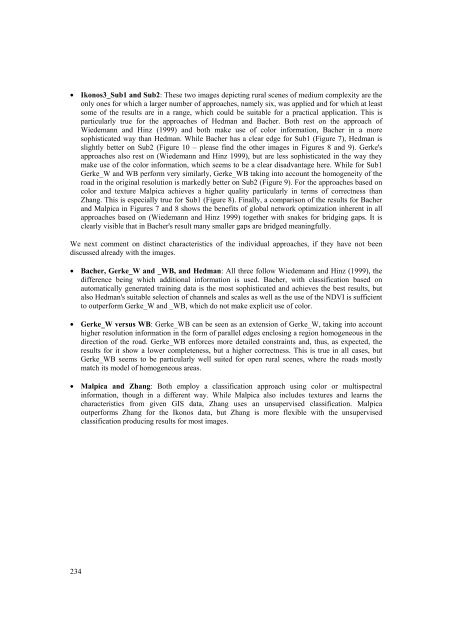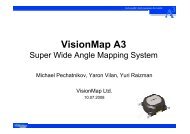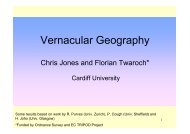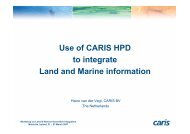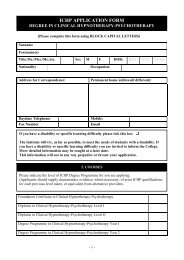EuroSDR Projects - Host Ireland
EuroSDR Projects - Host Ireland
EuroSDR Projects - Host Ireland
Create successful ePaper yourself
Turn your PDF publications into a flip-book with our unique Google optimized e-Paper software.
• Ikonos3_Sub1 and Sub2: These two images depicting rural scenes of medium complexity are the<br />
only ones for which a larger number of approaches, namely six, was applied and for which at least<br />
some of the results are in a range, which could be suitable for a practical application. This is<br />
particularly true for the approaches of Hedman and Bacher. Both rest on the approach of<br />
Wiedemann and Hinz (1999) and both make use of color information, Bacher in a more<br />
sophisticated way than Hedman. While Bacher has a clear edge for Sub1 (Figure 7), Hedman is<br />
slightly better on Sub2 (Figure 10 – please find the other images in Figures 8 and 9). Gerke's<br />
approaches also rest on (Wiedemann and Hinz 1999), but are less sophisticated in the way they<br />
make use of the color information, which seems to be a clear disadvantage here. While for Sub1<br />
Gerke_W and WB perform very similarly, Gerke_WB taking into account the homogeneity of the<br />
road in the original resolution is markedly better on Sub2 (Figure 9). For the approaches based on<br />
color and texture Malpica achieves a higher quality particularly in terms of correctness than<br />
Zhang. This is especially true for Sub1 (Figure 8). Finally, a comparison of the results for Bacher<br />
and Malpica in Figures 7 and 8 shows the benefits of global network optimization inherent in all<br />
approaches based on (Wiedemann and Hinz 1999) together with snakes for bridging gaps. It is<br />
clearly visible that in Bacher's result many smaller gaps are bridged meaningfully.<br />
We next comment on distinct characteristics of the individual approaches, if they have not been<br />
discussed already with the images.<br />
• Bacher, Gerke_W and _WB, and Hedman: All three follow Wiedemann and Hinz (1999), the<br />
difference being which additional information is used. Bacher, with classification based on<br />
automatically generated training data is the most sophisticated and achieves the best results, but<br />
also Hedman's suitable selection of channels and scales as well as the use of the NDVI is sufficient<br />
to outperform Gerke_W and _WB, which do not make explicit use of color.<br />
• Gerke_W versus WB: Gerke_WB can be seen as an extension of Gerke_W, taking into account<br />
higher resolution information in the form of parallel edges enclosing a region homogeneous in the<br />
direction of the road. Gerke_WB enforces more detailed constraints and, thus, as expected, the<br />
results for it show a lower completeness, but a higher correctness. This is true in all cases, but<br />
Gerke_WB seems to be particularly well suited for open rural scenes, where the roads mostly<br />
match its model of homogeneous areas.<br />
• Malpica and Zhang: Both employ a classification approach using color or multispectral<br />
information, though in a different way. While Malpica also includes textures and learns the<br />
characteristics from given GIS data, Zhang uses an unsupervised classification. Malpica<br />
outperforms Zhang for the Ikonos data, but Zhang is more flexible with the unsupervised<br />
classification producing results for most images.<br />
234


